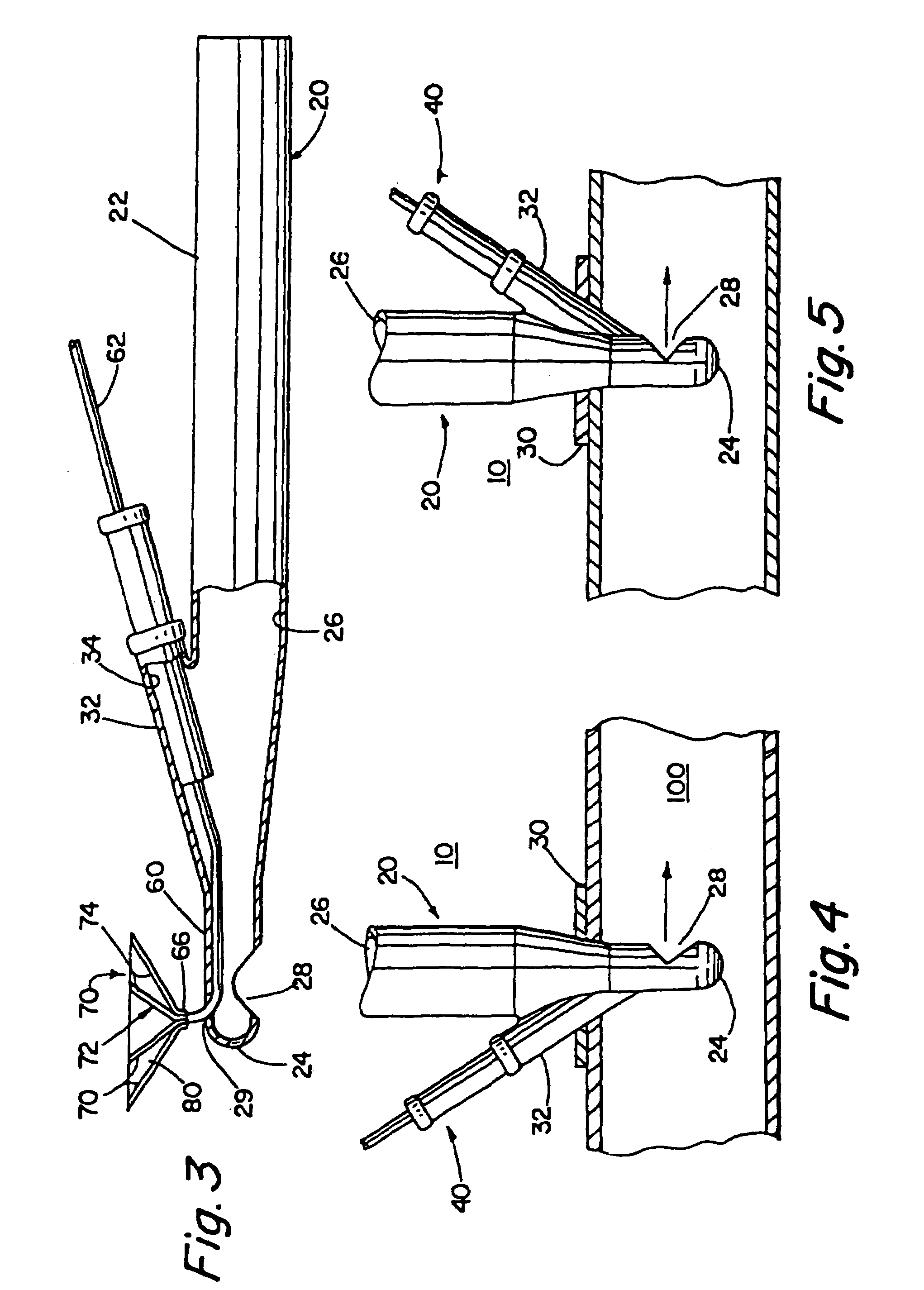Methods for protecting a patient from embolic material during surgery
a technology for embolic material and surgery, applied in the field of blood filter devices, can solve the problems of preventing the device from effectively capturing additional material, affecting the blood flow through the filter, and affecting the patient's recovery, so as to achieve the effect of reducing the risk of embolic material breaking loose, increasing the risk of embolic material being dislodged, and increasing the likelihood of being captured
- Summary
- Abstract
- Description
- Claims
- Application Information
AI Technical Summary
Benefits of technology
Problems solved by technology
Method used
Image
Examples
Embodiment Construction
[0037]Turning now to the drawings, FIGS. 1–5 and 16–19 show embodiments of an arterial cannula with modular filter device 10 in accordance with the present invention. As shown in FIGS. 18 and 19, the device 10 generally includes three components, namely a cannula 20, a tubular cartridge 42 and an expandable filter device 60, the latter two components together defining a modular filter cartridge 40.
[0038]The cannula 20 is an elongate tubular member 22, having a proximal end (not shown), a distal end 24, and a lumen 26 which extends between the proximal and distal ends 24. The proximal end is adapted for receiving blood from a bypass-oxygenator machine (not shown). The distal end 24 has a tapered, curved and / or rounded end adapted to enter an artery (not shown), and includes an outlet 28 communicating with the lumen 26. The cannula 20 may be formed from a substantially rigid material.
[0039]The cannula 20 includes a side port 32 for receiving the modular filter cartridge 40. The side p...
PUM
 Login to View More
Login to View More Abstract
Description
Claims
Application Information
 Login to View More
Login to View More - R&D
- Intellectual Property
- Life Sciences
- Materials
- Tech Scout
- Unparalleled Data Quality
- Higher Quality Content
- 60% Fewer Hallucinations
Browse by: Latest US Patents, China's latest patents, Technical Efficacy Thesaurus, Application Domain, Technology Topic, Popular Technical Reports.
© 2025 PatSnap. All rights reserved.Legal|Privacy policy|Modern Slavery Act Transparency Statement|Sitemap|About US| Contact US: help@patsnap.com



